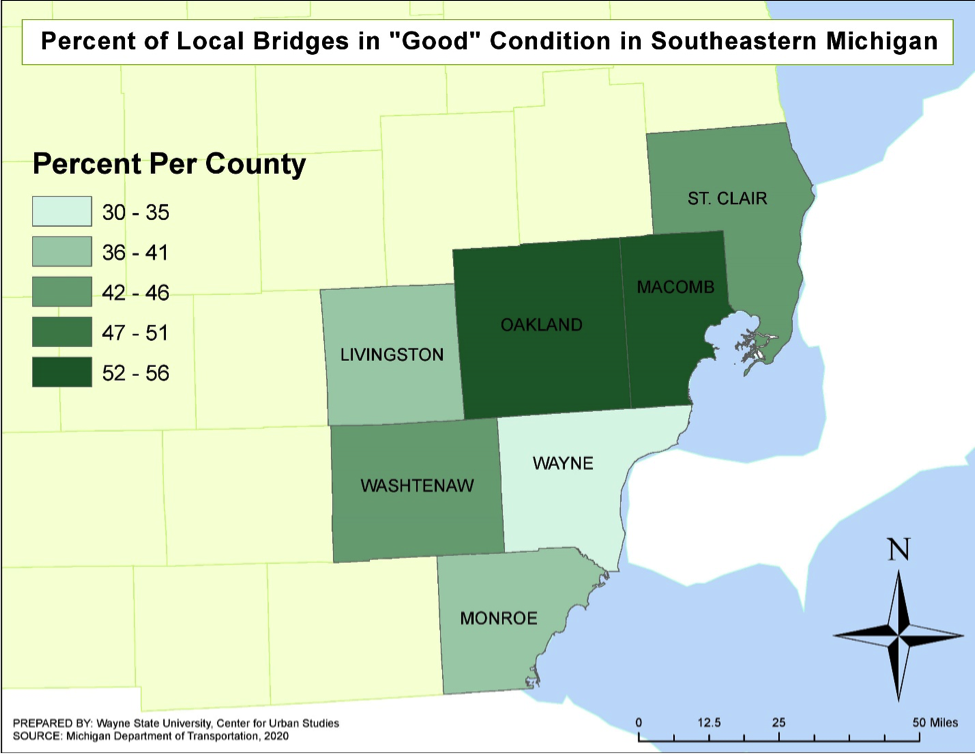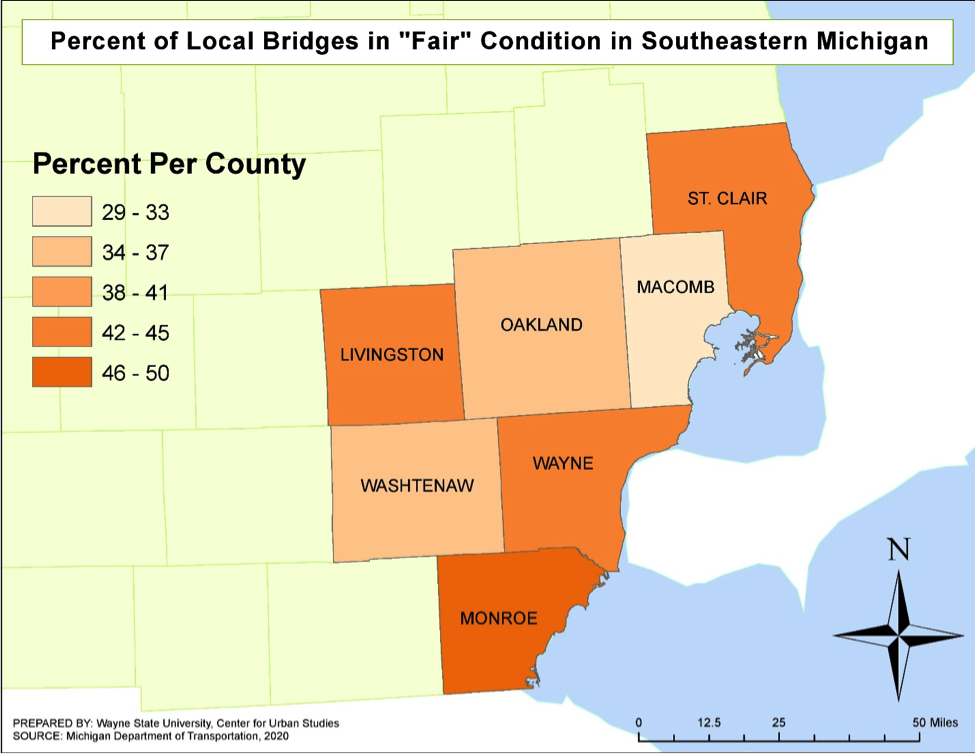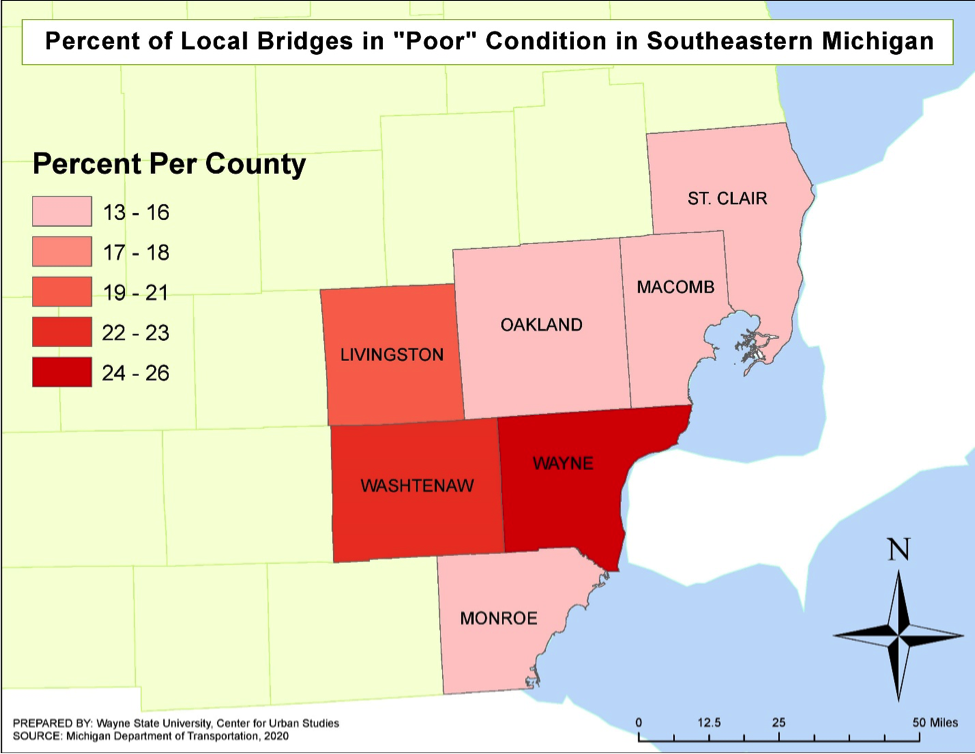Last week we highlighted the condition of bridges maintained by the State Michigan through the Department of Transportation, this week we look at the condition of bridges maintained by the local entities, which are typically counties. Act 51 Funds are also used to maintain and build bridges at the local level, however, it is the local entities that are prioritizing the road/bridge projects rather than the State. Additionally, the local entities also have the ability to levy additional taxes to pay for the upkeep of their locally controlled infrastructure.
In the first map below we see that Macomb County has the highest percentage of bridges that are deemed to be in good condition at 56.1 percent, followed by Oakland County where 52.9 percent of the bridges are in good condition. Wayne County has the lowest percentage of its bridges deemed in good condition at 30 percent. According to the National Bridge Inventory database, a bridge is considered to be in good condition when it only requires routine maintenance.

For the bridges deemed in fair condition, Monroe County has the highest percentage in the region at 49.5 percent. In Wayne County, 43.8 percent of the locally controlled bridges are in fair condition, meaning majority of the local bridges in the county are in that condition. Regionally, Macomb County has the lowest percentage of bridges in fair condition at 28 percent. A bridge is considered to be in fair condition when preventative maintenance and/or minor rehabilitation is needed.

Regionally, Wayne County has the highest percentage of bridges in poor condition at 26 percent, followed by Washtenaw County where 22.5 percent of local bridges are in that condition. St. Clair County has lowest percentage of locally controlled bridges in poor condition at 13 percent. A bridge is considered to be in bad condition when major or emergency rehabilitation is required or if a bridge is closed due to its condition.

Overall, the data shows that only three of the seven counties in Southeastern Michigan have majority of their locally controlled bridges deemed to be in good condition. The remaining four counties-Livingston, Monroe, Washtenaw and Wayne counties-all have majority of their local bridges deemed to be in fair condition. While this is better than majority of them being in poor condition, it does show signs that the local government entities should continue to monitor the conditions of the local bridges, and truly all the local infrastructure, to best prioritize regular maintenance and rehabilitation work to extend the overall life of structures for as long as safely possible.
Furthermore, when comparing the overall conditions of the bridges overseen at the local level versus those overseen by MDOT, six of the seven counties in Southeastern Michigan had majority of their bridges deemed to be in fair condition, and all at highest percentages than the locally controlled ones (majority of Washtenaw County’s MDOT bridges were in good condition, but it also had the highest percentage of MDOT bridges in poor condition). What this likely shows is the State has done a better job at regular maintenance on this section of infrastructure to ensure the bridges remain stable, but some of the locals (Oakland, Macomb and St. Clair counties) have been able to utilize their local funding better to put more of their bridges into the good category. How funding is divided up for infrastructure projects at the State and local level is based on many things including, immediate needs, guidelines set forth by the State of Federal government, public outcry and politics